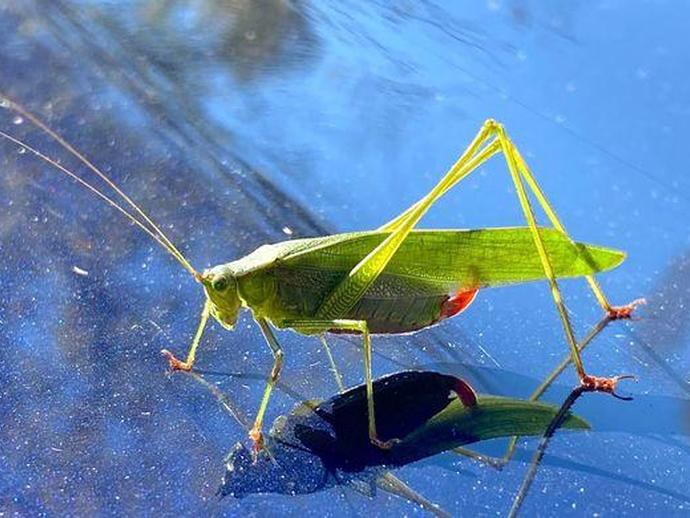November 18, 2021
Ben here with the Thursday edition of #BenInNature presented by our friends at Carter Bank & Trust!
This is the fork-tailed bush katydid Scudderia furcata, and I expect it's the last katydid I'll see in 2021. I spotted this lady on Oct. 24, which was already pretty late in the season for katydids (at least here in southwest Virginia).
I've done a few posts about different katydids I've found -- as Marge Simpson once said in regard to potatoes, "I just think they're neat" -- but I don't know that I've talked about katydids as a whole. They belong to the family Tettigoniidae, and there are more than 6,400 species of katydid worldwide! You can find katydids on every continent except Antarctica.
Katydids belong to the order Orthoptera, which also includes the grasshoppers. How do you tell the difference between a katydid and a grasshopper? Katydids usually have very long, thin antennae -- sometimes exceeding their body length! -- whereas grasshoppers tend to have short, stubby antennae. Katydids usually live in trees and bushes, and many species like this one have evolved to resemble leaves, which allows them to blend in perfectly with their habitat. Of course, katydids are nocturnal and tend to be drawn to lights at night, so the camouflage doesn't work all that well when they land on your back porch.
Most katydids are vegetarians that feed on leaves and flowers, but there are also predatory species that eat other insects (and sometimes even snakes and lizards!). However, don't be concerned if you spot a katydid in your garden; they seldom occur in abundance so they aren't generally considered agricultural pests.
ABOUT #BenInNature
Social distancing can be difficult, but it presents a great opportunity to become reacquainted with nature. In this series of posts, Administrator of Science Ben Williams ventures outdoors to record a snapshot of the unique sights that can be found in the natural world. New updates are posted Monday - Friday, with previous posts highlighted on the weekends. This series of posts is made possible thanks to the support of VMNH Corporate Partner Carter Bank & Trust (www.cbtcares.com).
NATURE PHOTO IDENTIFICATIONS
If you discover something in nature that you would like help identifying, be sure to message us right here on Facebook with a picture (please include location and date of picture) and we'll have our experts help you identify it!

 Hours & Admissions
Hours & Admissions Directions
Directions

